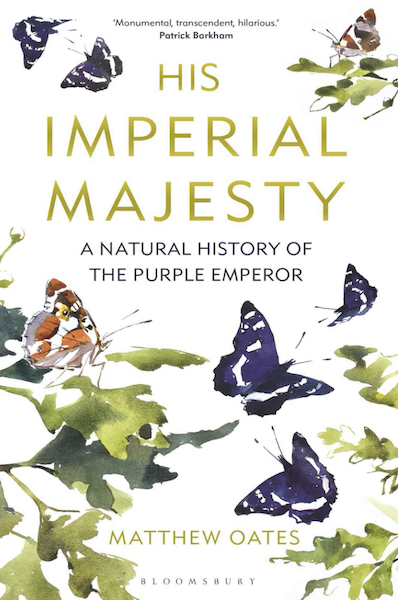 |
When summer is at its zenith and the sallow foliage develops a bluish tinge, a giant butterfly - beautiful, bold and brazen - flies powerfully over the tree canopy. Females of this species, wary yet determined, haunt the sallow thickets, depositing their eggs, while the males establish treetop territories and descend to the woodland floor in search of indelicacies to feed upon. Mysterious, elusive and enthralling in equal measure, this is the butterfly that Victorian collectors yearned for above all others: His Imperial Majesty, the Purple Emperor.
A wondrous enigma, the Purple Emperor is our most elusive and least-known butterfly - we glimpse it only through fissures in its treetop world, yet this giant insect has fascinated us for centuries and has even inspired its own 'Emperoring' language. Matthew Oates became captivated by the Purple Emperor following his first sighting as a boy. He has studied it assiduously ever since, devoting his life to trying to unravel the Emperor's secrets.
His Imperial Majesty takes us on a journey, beginning with a dalliance into the bizarre history of our engagement with the butterfly, with daring doings and gross eccentricities from the Victorian and Edwardian eras. Subsequent chapters explore all aspects of this remarkable butterfly's life cycle, including behaviour, habitat preferences, life history and conservation, all relayed in Matthew's unique, informative and witty style. Not so long ago, our knowledge of the Emperor was largely based on a blend of mythology and assumption. This book dispels the fabrications and reveals all about the Purple Emperor - the king of British butterflies.
If there is one butterfly that will get the pulse racing, it is the Purple Emperor, the subject of this incredible piece of work by Matthew Oates. Following on from his books In Pursuit of Butterflies and Beyond Spring, this latest work is the culmination of a 50-year affair that Oates has had with His Imperial Majesty, as the male butterfly is affectionately known. Not since the 1964 classic Notes and Views of the Purple Emperor by Ian Heslop, George Hyde and Roy Stockley, has such a dedicated and authoritive tome been produced.
Oates makes it very clear that there is still much that we do not know about this butterfly, which is is more than compensated for by the extraordinary insights that are shared. For example, contrary to popular belief, the butterfly is not confined to oak woodland, but simply requires sallows, the larval foodplant, as evidenced by the butterfly's presence in the sallow scrub at Knepp Castle Estate in Sussex, the location of a pioneering rewilding project. The butterfly is also turning up in scrubland in suburbia.
The book is organised into 17 chapters, starting with a history of this butterfly, and ending with conservation issues and future prospects. The majority of the book, however, is dedicated to the butterfly's ecology, including chapters discussing in detail the two sexes with tips on how to find them, habitat preferences, breeding grounds, egg laying preferences, and each of the immature stages. There is an emphasis on the caterpillar, given that the butterfly spends 10 months in this stage and I've had the good fortune of spending time with the author while he monitored overwintering larvae at Savernake Forest in Wiltshire, and can confirm that Matthew's writing is just as he is in person - humourous and full of anecdotes - and includes the tale of one poor individual who died when he fell out of a sallow tree while looking for Purple Emperor eggs and caterpillars. But what a way to go!
The book also includes an extremely useful and comprehensive appendix that describes the history and current status of the butterfly, organised by region and county, and lists key localities. Here we find that the butterfly is expanding its range, and filling in gaps within its current range. Oates encourages all of us to leave the beaten track, and look for this butterfly in less well known areas in order to better understand its true distribution.
In summary, this book is essential reading for any butterfly watcher - professionals and amateurs alike - not only will it provide unique insights into one of our most enigmatic butterflies, but will also inspire and guide the reader in developing a deeper understanding of how to watch and study our butterfly fauna more generally. Highly recommended!